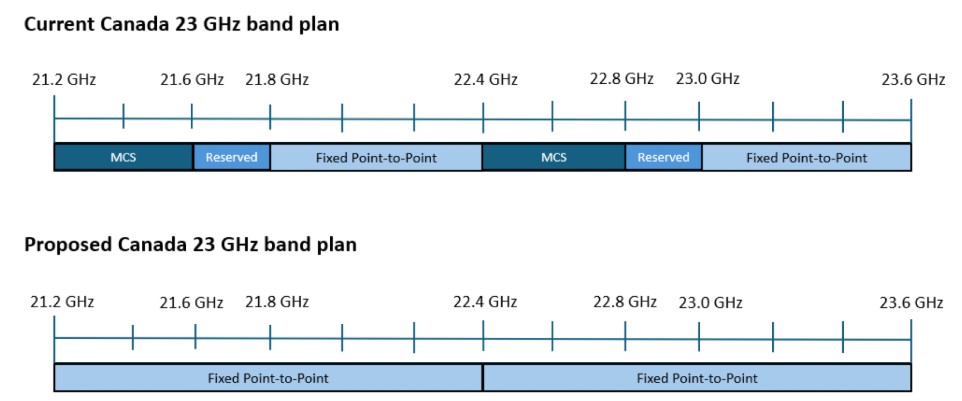
By Ahmad Hathout
Innovation, Science and Economic Development Canada (ISED) is looking to make more spectrum available for commercial wireless backhaul by dedicating certain bands to fixed point-to-point systems.
Proposed Friday, the clearance of the 21.2-21.8 GHz and 22.4-23 GHz bands from its multipoint communications system (MCS) designation – as demonstrated in the below ISED graphic – would create a contiguous stretch for wireless backhaul as capacity demands increase with the deployment of 5G technology, private networks, and fixed wireless internet services.

ISED held the reserve portions for either MCS or point-to-point radio systems. But after a review, it found MCS deployments “never materialized as anticipated” and no licences were granted in these bands, which were initially contemplated for applications including air and space communications.
“The demand for backhaul capacity is driven by the demands of other services, such as commercial mobile services,” ISED said in a consultation document, published Friday. “In particular, different use cases and high data rates from 5G services are expected to have a significant impact on the future backhaul spectrum requirements.”
ISED says data traffic is expected to nearly triple by 2030, with a projected compound annual growth rate of 16 per cent, citing the latest Ericsson Mobility report from 2024.
“As such, enhanced backhaul capacity will be required so that the increased data traffic in a mobile network between the base station and a user can be effectively carried through the rest of the broader network,” it said. “Other types of networks, such as fixed wireless access and private networks, are also experiencing growth in capacity requirements which will also result in a need for proportional backhaul support.”
The department is asking for comments by September 18 about the proposed changes to the bands.
In 2020 and 2021, the department released spectrum in the 12.70-13.25 and 31.8-33.4 GHz bands for backhaul applications.
The latest proposal is part of the department’s five-year spectrum outlook from 2023.
Photo via SaskTel


